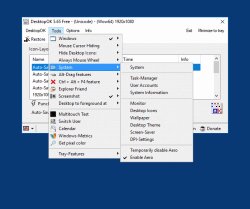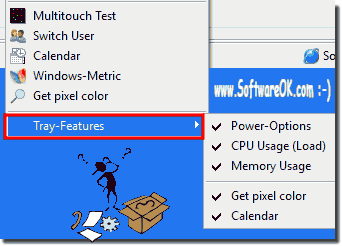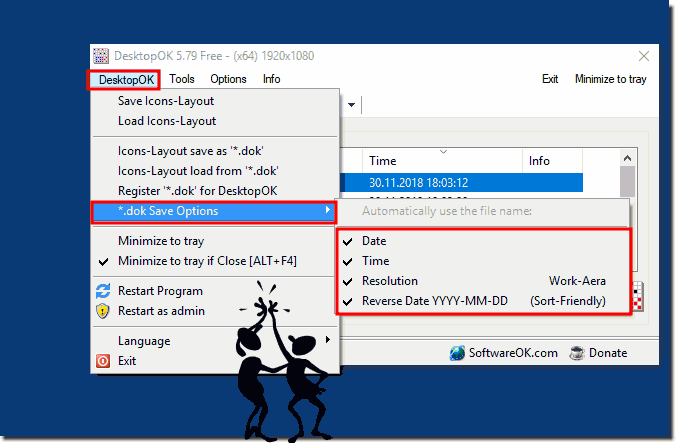
- #DESKTOPOK SOFTWARE VERSIONS INSTALL#
- #DESKTOPOK SOFTWARE VERSIONS UPDATE#
- #DESKTOPOK SOFTWARE VERSIONS PROFESSIONAL#
- #DESKTOPOK SOFTWARE VERSIONS WINDOWS#
#DESKTOPOK SOFTWARE VERSIONS WINDOWS#
The Surface RT (shown with keyboard cover attached) was the flagship Windows RT device upon its release. High-performance computing (HPC) servers Name Windows Server for Itanium-based Systems.
#DESKTOPOK SOFTWARE VERSIONS UPDATE#
#DESKTOPOK SOFTWARE VERSIONS PROFESSIONAL#
These two lines were reunited into a single line with the NT-based Windows XP this Windows release succeeded both Windows Me and Windows 2000 and had separate editions for consumer and professional use. However, Windows 3.1 had two separate successors, splitting the Windows line in two: the consumer-focused " Windows 9x" line, consisting of Windows 95, Windows 98, and Windows Me and the professional Windows NT line, comprising Windows NT 3.1, Windows NT 3.5, Windows NT 3.51, Windows NT 4.0, and Windows 2000. The first five versions of Windows– Windows 1.0, Windows 2.0, Windows 2.1, Windows 3.0, and Windows 3.1–were all based on MS-DOS, and were aimed at both consumers and businesses.
#DESKTOPOK SOFTWARE VERSIONS INSTALL#
In the following years, several further variants of Windows would be released: Windows CE in 1996 for embedded systems Pocket PC in 2000 (renamed to Windows Mobile in 2003 and Windows Phone in 2010) for personal digital assistants and, later, smartphones Windows Holographic in 2016 for AR/VR headsets and several other editions.Ī "personal computer" version of Windows is considered to be a version that end-users or OEMs can install on personal computers, including desktop computers, laptops, and workstations. The initial version was followed by several subsequent releases, and by the early 1990s, the Windows line had split into two separate lines of releases: Windows 9x for consumers and Windows NT for businesses and enterprises. It was first launched in 1985 as a graphical operating system built on MS-DOS. Microsoft Windows is a computer operating system developed by Microsoft. Using this simple trick, you can quickly revert the Desktop icon layout within a few seconds.Current Windows logo (introduced in 2021) Timeline showing releases of Windows for personal computers and servers Tip: you can subscribe to our YouTube channel HERE. The following video shows everything mentioned above in the action: The Desktop will appear with the previous icon layout. This will start the Explorer shell again. Once the Desktop disappears, type explorer at the opened command prompt and press Enter.This will forcibly close Explorer and prevent it from saving the new icon layout to the Registry. Type the following command: taskkill /IM explorer.exe /F.Instead, open a new instance of the command prompt.Do not use the tools ExitExplorer or RestartExplorer. Do not exit Explorer using this hidden secret option.

Do not sign out from your current Windows session. Now I 'accidentally' changed it to the following appearance:

Here is what you need to do to terminate Explorer.įor example, I have set the following icon layout: So, the next time you start Explorer, it will use the previous customized icon position, as it still stored in Registry. Instead, if you terminate the Explorer process, it will not write the new icon layout to the Registry.

you need to do it immediately after they get rearranged.Īs you might be knowing, every time Explorer exits, it saves the Desktop icon layout to the following Registry key: HKEY_CURRENT_USER\Software\Microsoft\Windows\Shell\Bags\1\Desktop This trick works only if you have not signed out from your account yet, e.g. Regardless of the cause of the issue, it is possible to revert Desktop icons auto arranging in Windows 10. Or you might accidentally tick the Auto arrange icons menu item in the Desktop context menu: It can happen if you accidentally press one of Ctrl + Shift + 1.5 hotkeys on Desktop which will switch the icon view to Details, Content or List view. There are some situations when the icon view and arrangement of desktop icons changes.


 0 kommentar(er)
0 kommentar(er)
